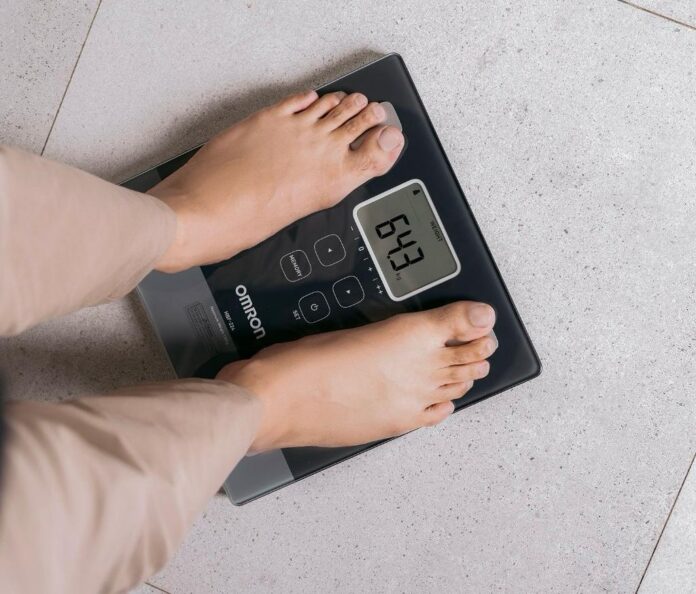Many people rely on body weight as a metric when tracking their health. Indeed, it’s very easy to measure simple body weight with a bathroom scale, and it is often the first element people look at when starting a fitness or wellness journey. While weight can give a general indication of how the body changes over time, it doesn’t distinguish between fat, muscle, water, or bone. Two people can weigh the same but have very different body compositions, illustrating why it’s challenging to accurately assess progress using weight alone. That’s why many individuals who are looking to better manage their health are turning to body composition monitors.
These devices offer a more detailed picture of your body’s makeup, going beyond weight to give you a clearer sense of your progress. With many user-friendly models now available, they’re also very accessible for regular use at home.
In this guide, we’ll walk through how to properly use a body composition monitor and the best practices for getting consistent, accurate results over time.
Understand What a Body Composition Monitor Measures
A body composition monitor is a device or scale that provides a breakdown of your body’s different components. Unlike a traditional weighing scale that gives you a single number based on your weight alone, a body composition monitor uses a technology called bioelectrical impedance analysis. This method sends a low-level and hence safe electrical signal through the body to estimate the amount of fat, muscle, water, and bone mass that a person has.
Among the most common metrics you’ll encounter when you use a body composition monitor are body fat percentage, which indicates how much of your weight is made up of fat; muscle mass, which is useful for tracking fitness progress; body water, which is an important marker of hydration; bone mass, which typically remains stable in adults but is helpful to monitor over time; and visceral fat, which accounts for the internal fat surrounding your organs that’s associated with certain health risks when elevated.
Know Your Device
To get accurate readings, it’s essential to understand how your specific body composition monitor works. Take note that different brands and models may calculate and display metrics differently, so knowing the features and capabilities of your monitor is key.
Aside from reading the user manual, familiarize yourself with the units of measurement your device uses, such as percentages for body fat or kilograms for muscle mass. It’s also helpful to know the healthy ranges for your gender, age, and body type, which are often included in the device’s companion app or can be found online from reliable health sources.
If your monitor supports multiple user profiles, make sure yours is set up correctly so that your data doesn’t get mixed with someone else’s in your household. Your height, age, and gender all influence how the readings are calculated, so inputting accurate details will lead to more reliable results.
Prepare Yourself for a Reading
One of the most important things to remember is that timing and consistency matter. Your body composition fluctuates naturally throughout the day due to hydration, food intake, activity, and other factors. For the best results, try to take your measurements at the same time of day to ensure your readings are not influenced by temporary changes.
To avoid skewed results, refrain from eating or drinking before using the monitor. Likewise, do not exercise beforehand, as physical activity can temporarily alter your hydration and body temperature, which can then affect the readings. Avoid taking a shower or bathing just before measurement as well. There is a possibility that wet skin can interfere with the electrical signals used by the device.
Additionally, make sure you’re properly hydrated. Being either dehydrated or overhydrated can cause inconsistencies in readings for body water and visceral fat percentages. Aim to drink water regularly throughout the day, but avoid chugging a large amount just before stepping on the scale. Lastly, empty your bladder before taking a reading to remove another variable from the equation.
Take the Measurement Correctly
You also need to use the monitor correctly if you want to get accurate readings. Start by placing the device on a hard, level surface, such as tile or wood flooring. Avoid soft surfaces like those of carpets and rugs, as these can throw off the balance and lead to inaccurate readings.
Then, step onto the monitor barefoot, making sure your feet are clean and dry so the electrodes can make proper contact with your skin. Stand upright and be still when you’re on the monitor because even small movements can interrupt the signal. It’s also best to wear the same type of clothing each time you measure. Better yet, consider not wearing any clothing at all, as it can add weight and affect the consistency of readings.
Know When to Seek Professional Guidance
While a body composition monitor is a helpful tool, it shouldn’t replace professional advice. If you’re unsure how to interpret your results, it’s a good idea to consult a doctor, registered dietitian, or fitness professional. These experts can help you understand what your readings mean in the context of your personal health. They could also recommend safe and sustainable steps to help you meet your goals.
You can also use your data to enhance your discussions during medical or wellness appointments. Bringing a record of your body composition readings may help your provider offer more tailored recommendations.
Using a body composition monitor at home offers a more complete view of your health than a standard scale can provide. When used correctly and consistently, it allows you to track meaningful changes, such as fat loss, muscle development, and hydration levels. To get the most accurate readings, it’s important to follow best practices and understand how your device works. Paired with healthy habits and guidance from a healthcare professional, your body composition monitor can be a valuable tool for supporting long-term wellness goals.









